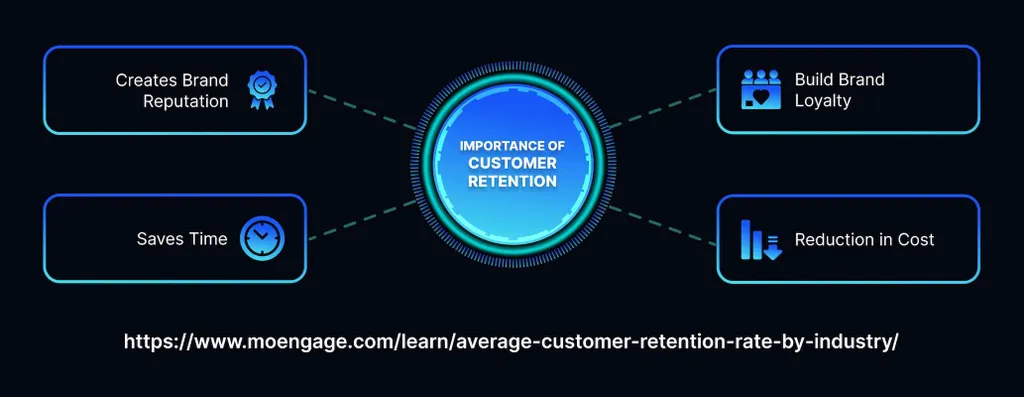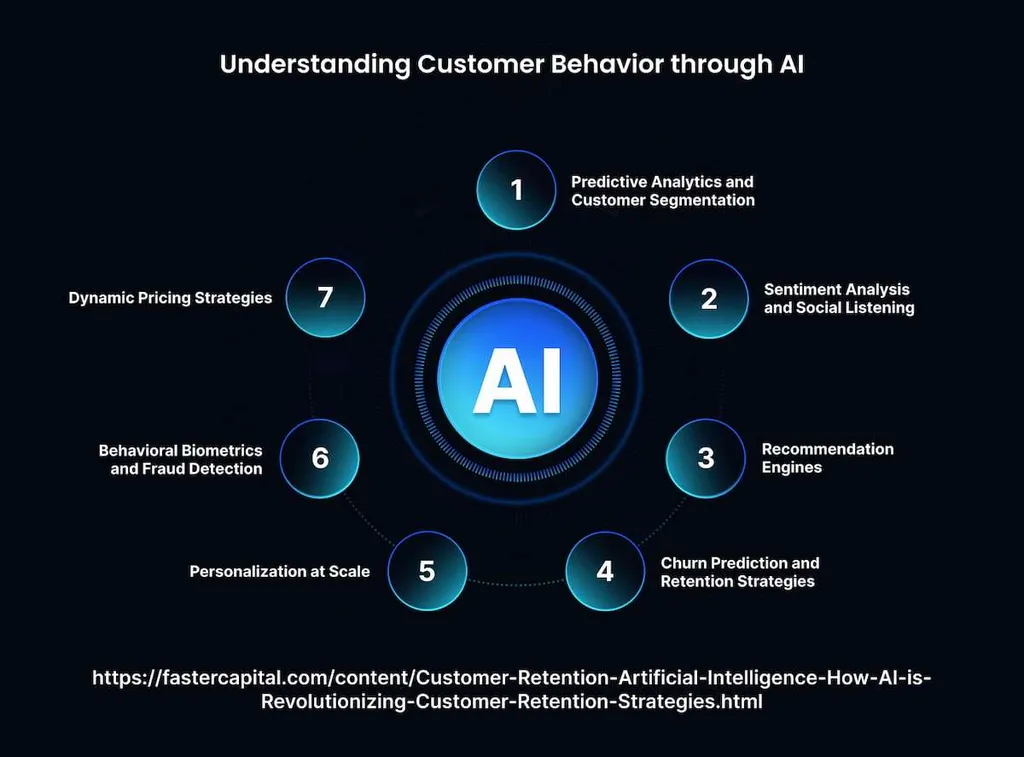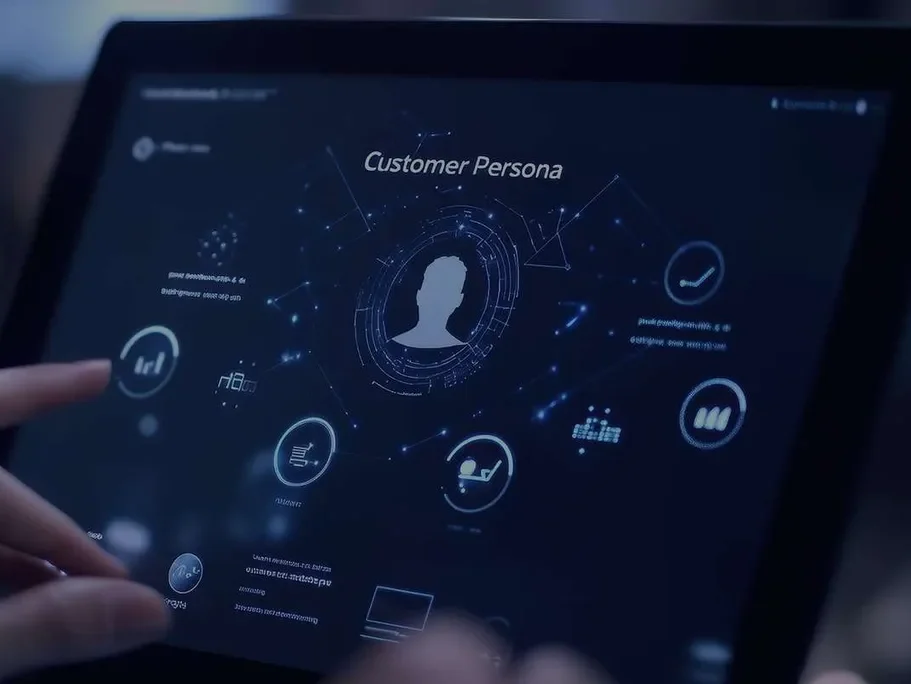As markets become oversaturated, and client attraction spending raises, firms realize that their development depends on one critical factor: customer retention. According to reports, growing retention by just 5% can enhance profits by 25% to 95%. That’s why businesses are shifting their focus from short-term acquisition to sustained engagement, and artificial intelligence tools accompany this transition. Read our blog post to uncover how AI customer retention works and how to achieve lasting client relationships without draining your budget.
Why Does Customer Retention Matter?
Maintaining existing customers directly impacts revenue, brand loyalty, and stable growth. Loyal clients bring others and require fewer resources than newly acquired ones.
Commitment also strengthens your bottom line. Repeat buyers are ready to spend up to 67% more than newcomers. This means every percentage point increase in retention turns into measurable financial gains.
Retention practices are a source of critical information about your customers. The insights into their real preferences and habits help in tailoring offerings, personalizing experiences, and improving marketing campaigns. It also ensures stability during market fluctuations. In low seasons or crises, loyal clientele are more likely to stay with brands they trust, bringing a stable revenue stream.

Understanding the Cost of Customer Churn
Customer churn signals deeper issues in your business model, product experience, or client support. The financial implications can be severe. Around 80% of future revenue often comes from just 20% of existing customers. When they leave, cash flow drops down, acquisition costs skyrocket, and marketing efforts face more pressure.
The math is simple: acquiring each new client can cost five to seven times more than maintaining an existing one. And it is critical to remember that churn often happens without warning. First, an individual becomes inactive and then slowly walks away, giving you little time to react.
Hidden costs also add up. Each churned customer means wasted onboarding, lost cross-sell and upsell opportunities, and a shrinking base of brand advocates. In SaaS or e-commerce, where lifetime value defines your decisions, even a modest increase in churn may disrupt growth forecasts.
To address these challenges, many business owners deploy AI customer loyalty solutions to detect early signs of disengagement and help keep regular clients before they walk away.
Customer Experience as a Lever for Retention
Client experience is one of the most influential factors in long-term retention. Even if your product is top-rated, poor or delayed communication with clientele will override that benefit. In competitive markets, how you support, engage, and communicate with users often sets you apart.
Even a single frustrating dialogue might motivate a customer to reconsider their loyalty. In contrast, personalized and timely experiences build trust and encourage repeat engagement. AI solutions help companies anticipate needs, shorten response times, and deliver human-centered support.
Keeping customers today requires more than solving their problems. It demands creating consistent and proactive experiences that feel native. AI customer retention helps teams deliver this at scale without sacrificing quality or personalization.
AI Applications for Customer Retention
Retaining customers requires more than great products. It also needs timely insights, personalized service, and consistent engagement. Let’s look at several applications of AI customer retention that will benefit your business.

Predictive Analytics
AI-powered predictive analytics can identify early signs of churn long before an individual openly voices dissatisfaction. By analyzing purchase history, product usage, support interactions, and engagement frequency, predictive models forecast who is at risk and why.
Typically, it performs:
- Monitoring usage patterns and inactivity
- Scoring churn risk based on real-time behavior
- Triggering retention campaigns automatically
By applying customer retention machine learning, firms can uncover hidden patterns in user behavior and streamline actions that keep high-value customers motivated. For example, if a loyal buyer hasn’t logged in for a week, the system might automatically trigger a check-in email or a special offer.
AI-Powered Customer Support
Chatbots now handle more than the initial customer service load. They assist at every stage, easily answering common questions, providing delivery updates, and guiding users through account issues. When they face difficulties, they escalate the dialogue to a human agent with full context, making the support process faster and more seamless.
MetaDialog is one example of how this works in practice. Its AI-driven support platform allows businesses to deploy chat systems which understand natural language, learn from previous interactions, and respond with contextual relevance. Unlike basic bots that follow rigid scripts, MetaDialog’s technology enables deeper, more human-like conversations, helping brands resolve queries faster, lower wait times, and elevate the client experience around the clock.
Sentiment Analysis
AI-driven sentiment analysis scans customer feedback from emails, reviews, social media posts, and surveys to detect their real attitude toward your brand. This allows companies to identify unhappy customers early, even if they haven’t explicitly complained.
Thanks to monitoring shifts in sentiment, firms have enough time to react and intervene with personalized outreach or service recovery initiatives that prevent churn and reinforce trust.
Automated Follow-ups and Re-engagement
Based on individual behavior and timing, it is possible to automate follow-up emails, push notifications, and in-app messages. These touchpoints, whether reminding a customer of an abandoned cart or re-engaging inactive users, are tailored to maximize impact.
Automation ensures no opportunity is missed, while AI-driven personalization boosts response rates. If done well, it keeps customers engaged and coming back without adding workload to your team.
Tips You Should Keep in Mind
AI customer retention improves brand loyalty, but only when applied with strategy. Below, we have prepared several practical tips to help you control your AI instruments and get the most out of them.
- Segment your client base before adopting AI: Use historical purchase data, engagement history, and behavioral patterns to group customers. AI tools work best when trained on well-defined segments. For example, you might separate highly engaged repeat buyers from those who made just one purchase or haven’t interacted in a while. This allows the system to tailor messaging, predict future actions, and make specific actions.
- Teach the system on real past churn data: Feed your model data about clientele who walked away, such as what they bought, when they stopped engaging, their support tickets, etc. Thus, you will help the system to recognize early churn signals and flag at-risk individuals.
- Fine-tune automated triggers: If a customer hasn’t logged in, opened an email, or placed an order within a set timeframe, use AI to send personalized nudges, such as reminders, discounts, or useful content, based on what’s worked in similar cases.
- Build retention dashboards: AI models scan data streams and detect anomalies and trends, but your team needs visibility to act on them. So, you have to create real-time dashboards to pinpoint metrics like repeat purchase rate, customer lifetime value, churn risk, and NPS.
- Regularly check your results: As we know, all AI tools are good if there is high-quality data and logic behind them. Schedule periodic reviews to ensure recommendations, messages, and support flows align with your brand voice, customer expectations, and evolving retention goals.
- Utilize AI customer retention insights to guide decisions across teams: Analyze churn risk scores, attitude changes, and behavior data to strengthen marketing campaigns and improve product development and pricing strategies. This turns AI from a hype product into an asset for company growth.
Even if you delegate 90% of interactions, make sure customers can still contact a real person. Frustration over getting “stuck with a bot” is a fast route to lose your clients.
Bottom Line
Retention is revenue. Firms prioritizing keeping existing clients over constantly chasing new ones have more substantial margins, higher customer lifetime value, and stronger brand advocacy.
While product quality and pricing matter, research shows overall service is often the deciding factor in whether a customer stays or leaves. In fact, poor support is one of the top reasons customers churn. With innovative technologies, things go smoother. Service providers like MetaDialog help companies turn support into a retention driver by automating responses, reducing wait times, and providing fast, context-aware assistance. Instead of reactive service, you will offer proactive, always-on support, which builds loyalty.
